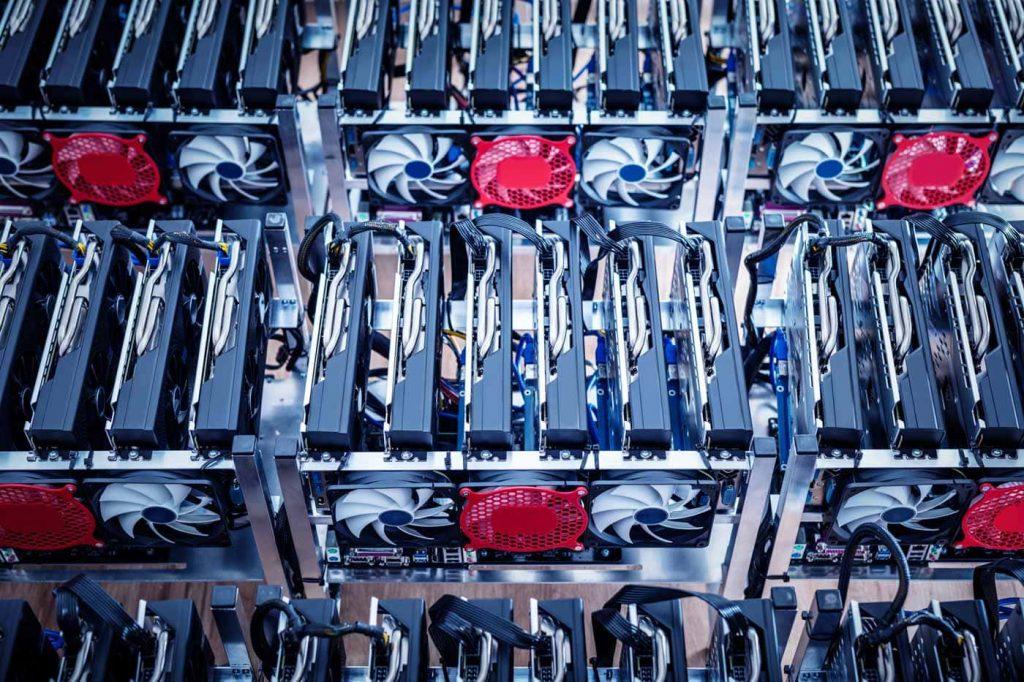The word Miner has always been associated with the people who continuously labored to unearth valuable assets–tirelessly. Now that the world has moved on from valuable physical assets to invaluable digital assets; miners are constantly trying to extract crypto assets. Although it is not the same as traditional mining that involves hammers and shovels, the concept displays cunning similarity.
Individual cryptocurrency miners frequently stumble to compete in the mining market due to the rising difficulty of mining new coins. Crypto miners often turn to the mining pool as a last resort to remain relevant in this more corporate-focused sector. This article discusses in detail–Crypto Mining pools.
What is a mining pool?
The concept of solo mining has become increasingly complex. Hence, individual miners join a mining pool and share or pool their resources, such as processing power, through a network, as opposed to mining independently. Mining pools are a productive and efficient alternative to individual users’ desktop computers because bitcoin mining consumes significant energy. According to their respective contributions of labor, these miners receive awards evenly.
The time it takes a participant to discover a new block is known as their hash rate, which indicates each member’s contribution to the mining pool. Hash power or hashes per second measures this parameter. Participants give the pool manager a block reward each time they find a new block. The manager pays each participant according to their contribution.
How does a miner pool work?
A mining pool serves as the group’s coordinator and distributes work units to each participant. The tasks done by the mining pool include managing member hashes, keeping track of each member’s effort, and allocating prizes. To prevent overlapping, each miner receives a distinct set of labor units.
Miners can request additional work units once they finish the allotted work unit. Mining pool methods allow the distribution of work across all the pool’s miners. In one approach, miners are assigned work units. And secondly, miners can select their own work units. The mining pool platform allows miners to decide how much work they want to take on. It ensures that the miners will pick a different set of labor units.
Cooperative work protocol
A cooperative work protocol enables numerous miners to work simultaneously on a single block. The blockchain and its native coin keep track of progress via a server connected to each miner in the same block.
Cooperative mining service
A server, also known as a cooperative mining service server, functions as a conduit to enable numerous users to pool their resources in real-time.
Mining software
The features and functionality of each mining program vary. They link the mining pool to the server, get the information needed to solve the complicated equations, and then get to work. When the software resolves an issue, it notifies the miner of the resolution and moves on to solve the subsequent equation for the next block.
What is the purpose of a mining pool?
Mining pools in Cryptocurrency help smaller miners profit since they can join a group where several people pool their funds to purchase mining equipment rather than relying solely on one person. Miners can successfully solve arithmetic problems to mine a new block in a pool. Users can pool their resources through mining pools to take on big firms. It indicates that a proportionate profit share is distributed to each miner.
How do mining pools make money?
Pool miners must comprehend the pool’s sharing formula before joining their rig. Here are a few popular mining pool methods to divide rewards and make money.
Pay Per Share (PPS)
The pay-per-share (PPS) technique provides a flat dividend for each share that is solved. Mining pools that use the PPS approach subtract pool fees and give miners a steady income. However, miners may not receive any transaction fees.
Full Pay Per Share (FPPS)
The PPS approach is comparable to the full pay-per-share (FPPS) method. The distinction is that FPPS pays out block rewards in addition to regular transaction costs. Miners get compensated regardless of whether a pool discovers a block or not.
Pay Per Last n Share (PPLNS)
The pay-per-last n shares (PPLNS) mechanism distributes profits as a percentage of the total number of shares that miners contribute (n). This payout mechanism uses a shift system to determine share submission and earnings.
How long does it take to mine 1 Bitcoin in a pool?

Even with optimal equipment and software, it takes around 10 minutes to mine one Bitcoin in a pool. Most solo users can mine one Bitcoin in 30 days.
Technically, it is impossible to mine a single Bitcoin, especially if one is mining solo. However, if users mine in a pool, the payouts are often in satoshis, a smaller denomination of the bitcoin coin that, after a certain amount of time, could equal one bitcoin.
How do you start mining a pool?
Once someone is familiar with cryptocurrencies and mining activities, they might join one themselves. Joining a mining pool enhances the likelihood that mining work will be compensated and enables competition with the top dogs.
Choosing equipment
If the mining equipment has enough power, one can mine cryptocurrencies. Mining programs heavily rely on a graphics processing unit (GPU) and a central processing unit (CPU). Instead, a person can search for an application-specific integrated circuit (ASIC). It is a particular mining apparatus.
Ensuring the transparency of the pool
Before joining, one must confirm the mining pool’s transparency and determine the pool manager’s integrity. For instance, whether surface-level mining pool stats about the hash rate of the entire mining pool are valid. Additionally, look for proof of low reward schemes and the pool’s payout plan.
Pool size and computational power
The computational power of the mining pool determines how many coins it will produce over time. The size of a pool may affect how quickly it mines, but generally speaking, the bigger the pool, the quicker it mines. Larger pools have a higher possibility of generating blocks because they have more processing power, but smaller pools often take longer.
Once someone has understood how to choose a mining pool that fits them right, they can join them and reap the rewards.
What are the different types of crypto mining pools?
Three different types of mining pools exist in the crypto-sphere. View each type’s offerings below.
Cloud-based pools
Miners can earn rewards with cloud mining without worrying about hardware, electricity, or commotion. They merely supply cloud mining service providers with mining power rent. These businesses frequently have sizable data centers that contain cloud mining technology. Individuals get into a contract to buy hash power from these businesses and mine in the cloud. Miners from nations with high electricity expenses prefer cloud mining.
Mining farms
All the miners reside in one place in a mining farm, typically at a large data center or warehouse. Crypto mining farms are just spaces with a lot of computers and servers. Some miners build home-based mining farms as well. However, they frequently struggle with excessive energy use and computer overheating.
Multipool mining
In search of the most lucrative coin, multipool miners switch between them. Before making mining investments, they consider a currency’s exchange rates and network mining power. These miners also mine numerous additional crypto coins, giving rise to the phrase “multipool mining.”
Here are the answers to some FAQs regarding the mining pools:
- What is the best mining pool for ethereum?– Ethermine, which supports real-time PPLNS payouts and offers anonymous mining. It delivers quick payouts upon reaching the payout threshold.
- Is there a binance mining pool?– Binance Cloud Mining, launched in November 2022, lets users earn mining rewards from Binance’s cryptocurrency mining pool without any need to buy, set up, or maintain mining equipment.
- What is the best mining pool for ravecoin?– Suprnova.cc, which holds 19.65% of the network’s hash power, is by far the largest ravencoin pool.
Conclusion
Before the arrival of other cryptocurrencies and the development of practically all prominent cryptocurrencies, pools were initially only meant for Bitcoin. Mining pools are a crucial part of the crypto ecosystem. Their expansion has a straightforward cause: Mining pools help with consistent crypto mining, ensuring that a blockchain runs without hiccups. The likelihood of benefiting from individual mining is dwindling. However, a mining pool is a more realistic approach for miners to reap the rewards.



